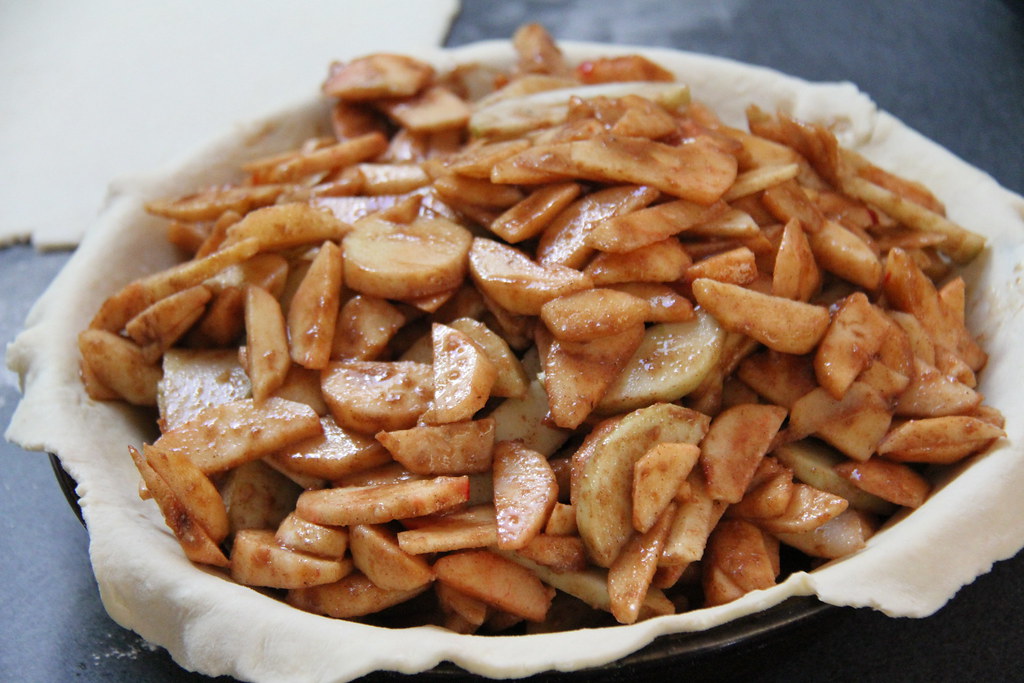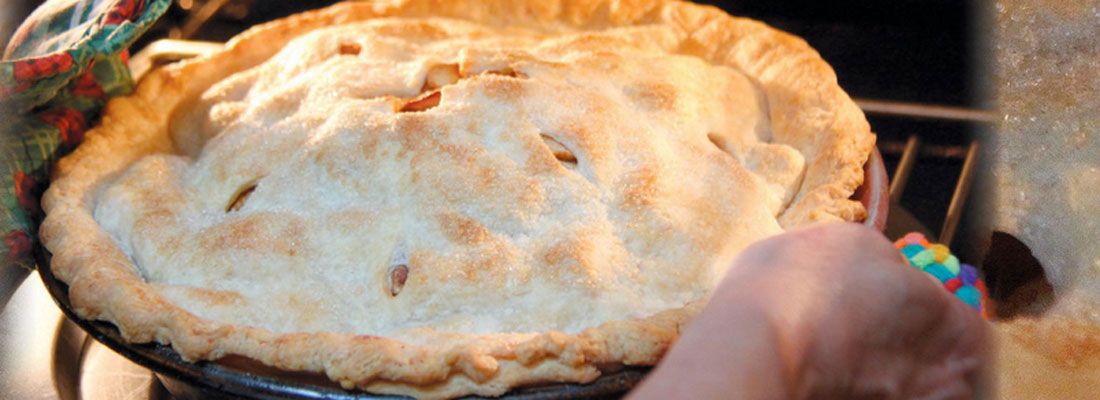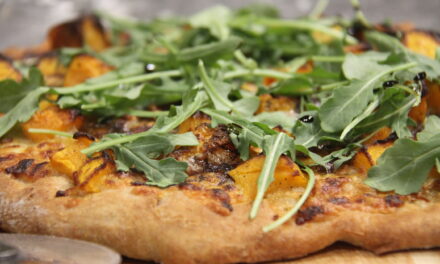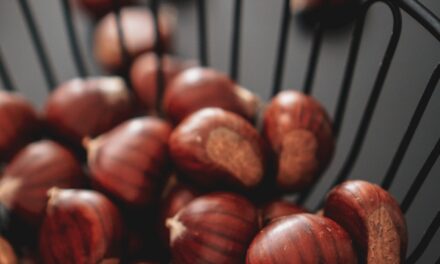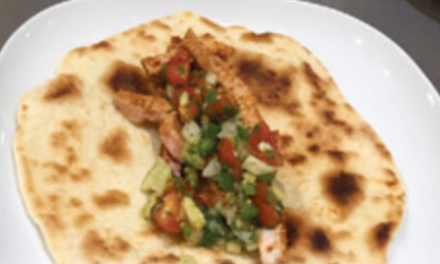By Paula Marcoux.
We might like to conceive of apple pie as an eternal touchstone of American traditional home baking—our shared culinary birthright—but before buying into that ideal as reality, I’d like you to consider how commonplace the true home-baked article actually is in your own life. Think about it: how many times in the past twelvemonth did you make, eat, or even see a freshly baked, fully homemade apple pie?
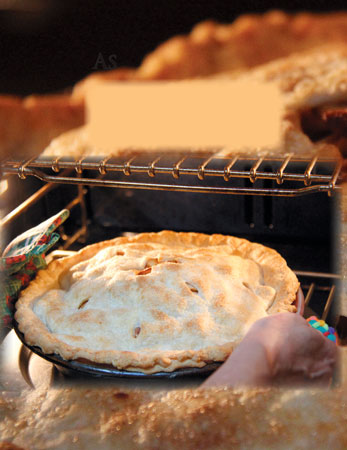
Face it: besides a brief and obligatory showing at Thanksgiving, this formerly commonest of pies is scarcely common at all any more. There are plenty of reasons, sure. Rational if unfortunate ones, like:
- Almost no one these days has a cellar full of apples, arrayed in barrels and bins, to deploy from October through March.
- Our southeastern Massachusetts roadways and hillsides are no longer lined with millions of apple trees, providing a massive pie-filling surplus most every year.
- And a more neutral, but still kind of sad, reason: Many other sorts of very tasty desserts have come into existence in the last 15 decades, putting old-fashioned items, no matter how wonderful, in the shade.
However, there is one very illegitimate reason that gets trotted out far too frequently in my presence: Fear of pastry-making.
I know a full-grown, otherwise self-assured, person, capable of writing code, doing a brake job, putting on a five-course dinner for known fussbudgets, getting a pill down the throat of an angry kitty, and many other superhuman acts of bravery and competence, who would rather body-surf in a black wetsuit among the seals off Plymouth Beach in August, than try to make a pie from scratch.
So let’s get a grip, people, and commit to learning this important life skill. Even if your first results are not beautiful, they will be delicious, and your abilities will improve rapidly as you gain experience. And there’s a special secret aspect here that’s one of my favorite characteristics of cooking as craft: you can practice to your heart’s content, making pie after pie as your eyes and hands learn to read the materials, and your products simply do not pile up around the house like the fruits of almost any other craft discipline. Every one magically disappears and only continues in memory. (“Remember that rhubarb pie you made the year before we moved out of the beach house…?” “Yeah, I think that was one of my best pies of the nineties…”)
So here follows a recipe for a very large apple pie, with lots of tips and pointers for pastry success. Why very large? There’s a lot to be said for going big on an apple pie.
First, there’s a real economy of scale at work here—once you start preparing the apples, you might as well just keep going. Plus, the most tedious work is easily shared; volunteers, as long as they are goal-oriented pie-lovers, are not hard to lure into the kitchen for a half hour of paring and slicing.
And then there’s the obvious bonus: it’s, um, bigger—increasing your chances for the cold apple pie and cheddar experience at breakfast the next day.
Pastry Tips
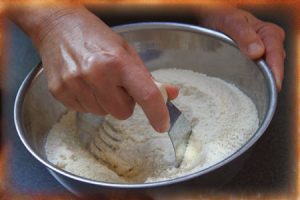
A pastry blender works as well as a food processor for cutting the fats into the flour.

No pastry blender? Use two table knives like scissors to cut in the lard.
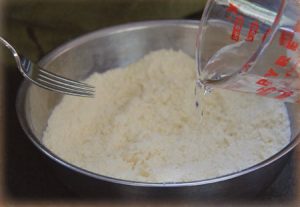
Go easy on the water—use the least possible amount to bring the dough
together.
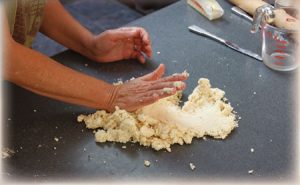
Use the heel of your hand—twice or thrice and no more—to smear the dough into cohesion before chilling.

Roll out the dough after it has rested in the fridge at least two hours.
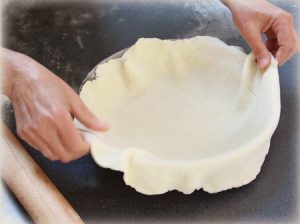
Center the pastry on the baking dish without stretching.

Handle the dough as little as possible with your warm hands.
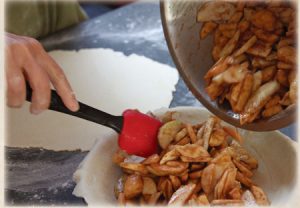
Have the filling ready before you touch the pastry.

Vents allow steam to escape the pie and the cook to spy into the pie.
RECIPES:
See our album for additional step-by-step photos:
